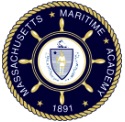
EN-4151
Applied Naval Architecture for Marine Engineers
Course Description
The course includes general naval architecture nomenclature, ship sizes and geometry, hydrostatic curves, transverse and longitudinal stability calculations, identification of principal structural members, and calculations for ship strength curves. The course also studies resistance relationships between an actual ship and a ship model, ship propulsion design requirements, and sizing of a ship’s engine and power plant.
Entrance Requirements
- Apply mathematical tools from algebra, trigonometry, and calculus
- Find the area under a curve using integration
- Apply principles of engineering mechanics and mechanics of materials
- Draw free body diagrams, and solve for forces acting on an object
- Determine stresses, strains and bending moments
- Calculate centroids and moments of inertia
- Draw shear and bending moment diagrams for a beam under different conditions of loading
- Apply principles of fluid mechanics to find the forces on a submerged object
- Be familiar with ship's nomenclature, ship's propulsion methods, and the parts of a ship
Learning Objectives
Demonstrate knowledge and understanding of the following STCW elements:
- OICEW-C1.1 Characteristics and limitations of materials used in construction and repair of ships and equipment
- OICEW-C1.4 Methods for carrying out safe emergency/temporary repairs
- OICEW-D2.1 Working knowledge and application of stability, trim and stress tables, diagrams and stress-calculating equipment
- OICEW-D2.2 Understanding of the fundamentals of watertight integrity
- OICEW-D2.3 Understanding of fundamental actions to be taken in the event of partial loss of intact buoyancy
- OICEW-D2.4 General knowledge of the principal structural members of a ship and the proper names for the various parts
Other Objectives
- Correctly use the basic nomenclature of ships, ship structure and ship stability
- Use ship's hydrostatic curves-of-form to calculate displacement and initial stability information
- Demonstrate a working knowledge of stability and the effect of load changes on stability, including the use of hydrostatic curves of form and cross curves of stability
- Demonstrate a working knowledge of ship's longitudinal and transverse trim and the effect of load changes on trim
- Demonstrate a working knowledge of the causes and effects of stress on a ship's hull
- Calculate gross structural hull loads and calculate longitudinal hull stress under these loads
- Understand the importance of watertight integrity
- Estimate a ship's power requirement based on model test data
Syllabus
- Basic nomenclature
- Weight and Tonnage Terms
- Ship Hull Form, Stations, Sectional Area Curve
- Ship Hull Form properties, Ship's Lines Drawing, Moments
- Archimedes Principle, Volume and Displacement
- Intro to Hydrostatic Curves
- Using Hydrostatic Curves
- Flotation & Initial Transverse Stability at small angles, KGB, and Transverse Metacenter, Centers, Righting Arm
- Trim & Stability Booklet, Shifting Weights
- Adding a Weight
- Removing a Weight
- Transverse Stability at large angles of heel,
- Static Stability Curve
- Cross Curves of Stability
- Effect of Free Surface on GM, Correction to assumed KG for Free Surface Effect
- Inclining Experiment
- Longitudinal Trim & Stability
- Flooding and Subdivision
- Ship Structure & nomenclature
- Ship Strength - Weight curve, Buoyancy curve
- Ship Strength curves
- Bending Stress, Moment of Inertia
- Ship Strength, primary and secondary hull loads
- Ship Strength - required Section Modulus
- Ship Resistance and Modeling
- Ship Propulsion Horsepowers